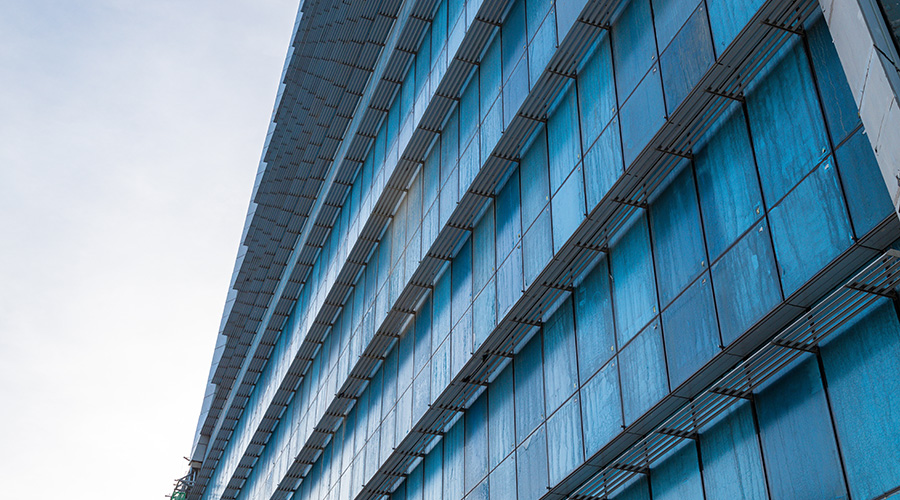Paints
Weighing Costs and Benefits
Paint and protective coatings for facilities come in a wide range of formulations, prices and performance features. Too often, attention is focused solely on keeping first costs low. When given the option of buying a paint at $10 per gallon, or a higher-quality one at $30 per gallon, facility managers typically choose the less expensive paint. The same thing happens when facility managers consider protective coatings.
Are facility managers really saving money when they select paints or coatings based on first costs? What is the long-term implication of a lower-quality product being applied? Are premium paints and coatings worth the extra money? What benefits do they provide? Should premium products always be used, or are there circumstances when using something else is beneficial?
To understand these issues facility managers should focus on reducing the life-cycle cost of paint and coating options.
Life-Cycle Costs
By identifying the total cost of ownership, facility managers can evaluate options for practically any component. A standard can be used for calculating life-cycle costs: ASTM E-917, Standard Practice for Measuring Life-Cycle Costs of Buildings and Building Products.
For paint and coatings, the most common life-cycle cost calculation is the cost per year of service for the paint or coating.
Calculated on a square-foot basis, the cost per year of service provides a comparison of different options. Typical costs in the calculation include the cost of the paint, any consumables used during the application and the labor for the application. In facilities where painting disrupts operations, it is important to factor in the cost of the disruption, including lost time and temporary relocation costs.
For each paint option, facility managers should evaluate factors such as the paint’s coverage, durability, ease of application and service life. These factors determine how much paint is needed for an application, how long it will take to apply the paint, how long the paint will retain its appearance, what equipment will be needed for application, and what special steps must be taken to protect building occupants.
For example, paints with a large amount of volatile organic compounds (VOCs) are considered detrimental to indoor air quality and may result in longer periods of disruption to occupied spaces. However, that does not mean that paints with less VOCs automatically reduce life-cycle costs. Low-VOC paints do offer the advantages of reduced first costs, less expensive disposal costs and less costly disruption costs, but, to achieve a life-cycle cost advantage, it is important to select a product that provides the same durability or coverage that can be expected from paint with a standard amount of VOCs.
Even the type of finish of the paint can have a significant impact on the life-cycle cost of an application. Consider a research and classroom building where the construction manager authorized the contractor to substitute a lower-quality, flat paint for the high-quality, eggshell-finish paint that had been specified. Although the switch saved several thousand dollars initially, the finish on the walls became so marred and dirty that all walls had to be repainted within two years.
In the past, similar areas had not required repainting for six to 10 years. The first-cost savings were more than surpassed by the cost of having to repaint so soon.
Comparing Options
When comparing different paint options, it is important to make a fair comparison between different products. To determine the coverage, durability and other characteristics of the paint, the manufacturer should provide documentation that the paint will perform to industry standards and has been tested by ASTM. Making fair comparisons is particularly important when comparing coating options. Coatings used on roofs and concrete surfaces are specifically applied to protect the facility against damage from the elements. If a product cannot provide that protection, the result can be extensive damage to facility components.
Realistic service lives must also be included in the calculation. Simply assuming different service lives for different quality paints is not sufficient. While paint manufacturers can provide some information on the expected service lives for their products, their ratings may not be realistic for a particular application. It is far better to look at the history of how different paints have performed in other similar areas of the facility. How much time passes before it is necessary to reapply that type of paint? What has been the experience with other types of paint?
Too Much Quality
As a general rule, facility managers should apply the highest quality paint available. Higher quality paint provides better coverage, is more durable, provides better hiding capabilities for defects, and offers more uniform color and sheen. Higher quality paints also retain their color and sheen better over time, thus extending their service life. And with labor being the largest cost in most painting projects, it makes sense to apply a high-quality paint so that the interval between paint cycles is as long as possible. The higher cost of materials will be more than offset by the reduced cost of labor.
There are, however, certain times when the life-cycle cost may be lower for a lower quality paint. Consider, for example, an application where the rate of churn is so high that areas are constantly being changed and renovated. Depending on the layout of these areas, and what changes are taking place, surfaces may require repainting after each change in space use. If the rate of change requires repainting on a one-, two-, or three-year cycle, then it will be more cost-effective to use a lower cost paint. If three years is the maximum time between paint cycles, many of the benefits of using a 10-year paint will not be realized.
That does not mean the cheapest paint should be used. Quality paint provides other benefits. What it means is that facility managers should select paint quality based on the needs of the application.
Churn is not the only reason for considering a lower quality paint. Some organizations have a policy of repainting areas, such as public lobbies, on an interval that is far shorter than the rated service life of high quality paint. The reason for the short interval may be to keep a freshness in those areas that can be achieved only through a general renovation or upgrade. It may be the result of a policy of changing colors and appearance on a regular basis. In those cases, it would be cost effective to use a lower quality paint. It is possible, however, that the policies were put in place because lower quality paint had been installed in those areas in the past and simply did not hold up.
While using lower quality paint for interior finishes may sometimes make sense, rarely does it apply to the use of protective coatings or exterior paint. In those cases, the risk of damage outweighs potential first-cost savings.
James Piper is a writer and consultant who has more than 25 years of experience in facilities management. He is a contributing editor to Building Operating Management magazine.
Related Topics:











